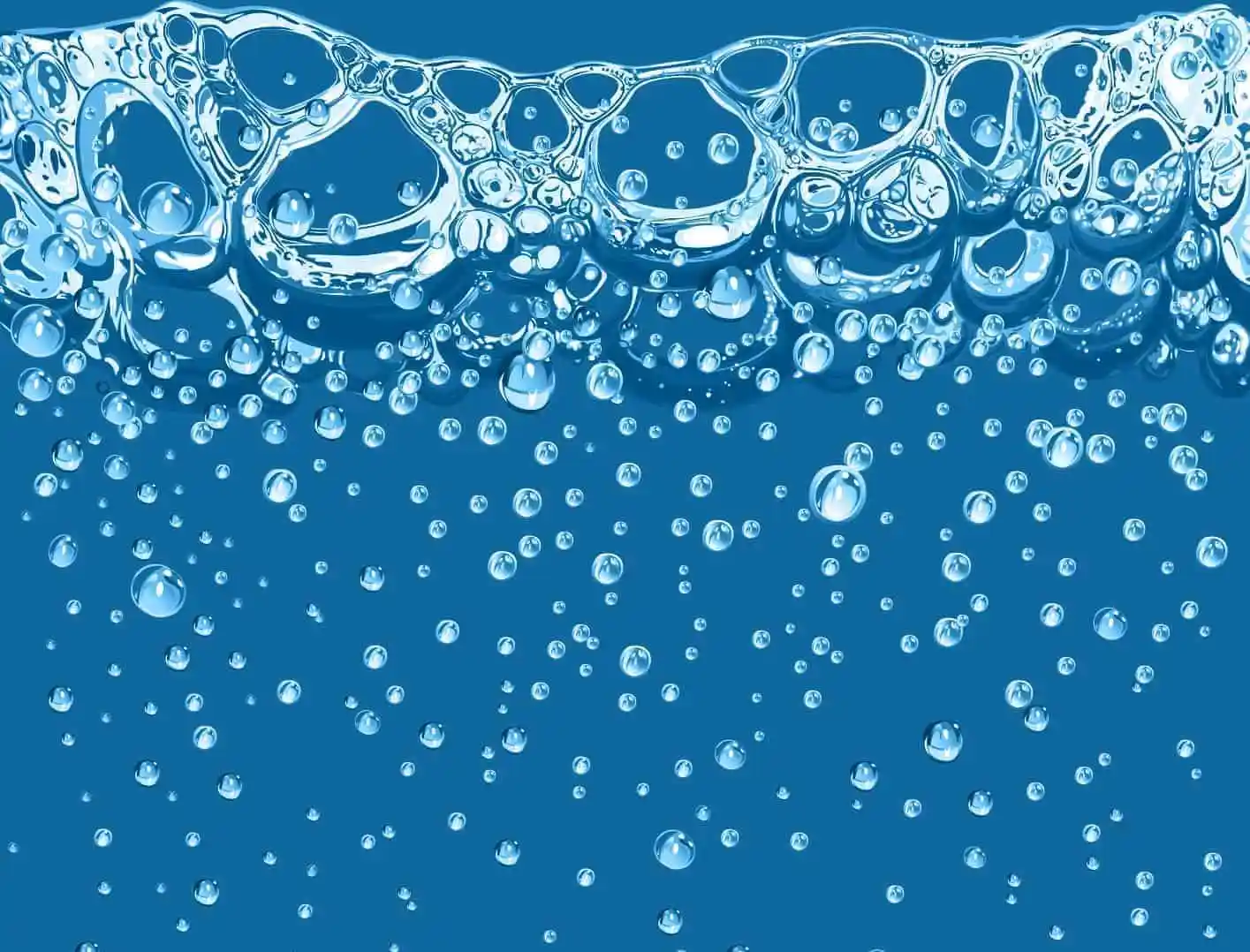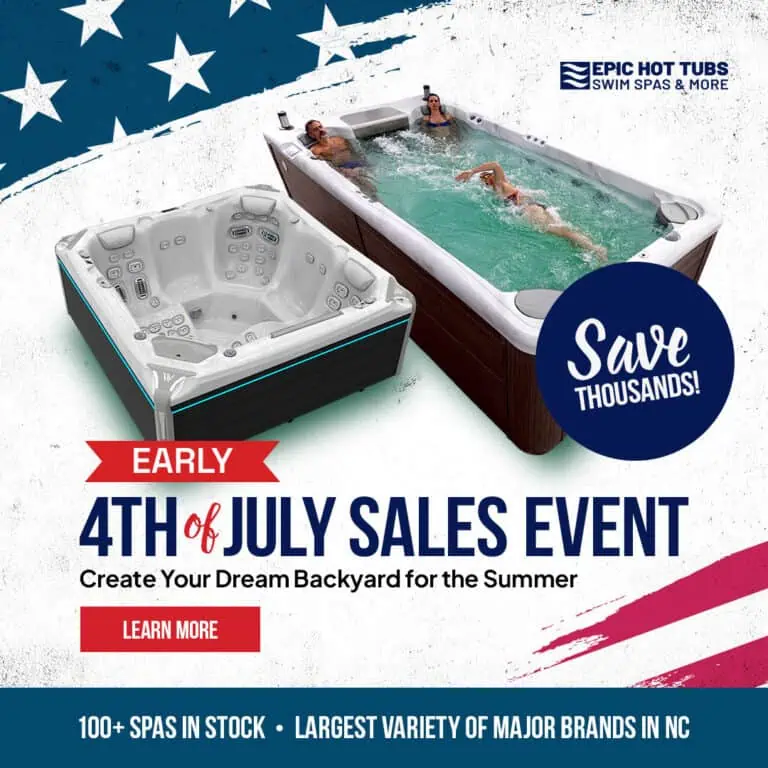A swim spa provides the best swimming and exercise experience. We're sharing some of the…

Swim Spa vs Pool – The Differences You Need to Consider
Everyone knows what a pool is, but what is a swim spa? Are they just like pools, but smaller? Are they overgrown hot tubs?
Swim spas are not just smaller, cheaper versions of swimming pools. They offer their own advantages and disadvantages. Here are some of them:
- Designed for swimming and relaxing
- Year-round usage for an extended swim season
- The swim experience can be amazing and personalized
Ready to learn more? Let’s get into it.
Why have swim spas become so popular?
Aside from the lower installation costs, swim spas tend to be more modular and can be seen as a good starter for an outdoor project as they come in one piece. Here are some of the biggest factors behind the rise in popularity of swim spas:
- Swim spas are much smaller than the average pool, so they fit into more backyards.
- The typical swim spa holds and uses much less water than an average-sized pool.
- Swim spa owners love the exercise in a comfortable water temperature all year round.
A nice above-ground pool or landscaped pool definitely adds value to your home, but many people are choosing the spa day over the pool party. So if you’re wondering “are swim spas worth it“, the answer is many people think so!
Swim Spa vs Pool: 9 Key Differences
Now, let’s talk about why they are making that choice.
- Space Requirements
- A traditional in-ground pool is 10 x 20 feet with varying depth amounts. The swim spa dimensions and swim spa sizes are generally 7 x 15, and up to five feet deep.
- Installation Costs
- For an average swim spa, the cost of the spa itself ranges from $10,000 minimum to about $30,000. Whereas average traditional pool costs range from $35,000 to $70,000. When putting in a pool, costs also need to be estimated for excavation and safety features such as fencing. Cost options tend to be lower for swim spa installation ideas.
- Running Costs
- A traditional pool requires a lot of water, both in refill cleanses and due to evaporation. Swim spas come with covers, so there is less waste due to evaporation. Electricity cost also comes into play for a pool, which features larger pumps.
- Design
- Designs for both types often vary depending on available yard space and added features: stairs, heating, etc. Swim spas tend to be more modular and owners can choose the outside skirting.
- Maintenance
- Swim spa setups often include filtration systems, and antimicrobial acrylic coverings, which means there is less need for ongoing attention to it. A full-sized swimming pool will require near-constant maintenance due to chemical balancing and cleaning. Algae growth can be a problem for both, but pools are more difficult simply because there is so much more surface area in a full-sized pool.
- Year-round usage
- Unless the owner has a heating system or is lucky to live in year-round mild weather, regular pools can only be run seasonally and require periods of preparation before and after. Heated pools are nice, but very costly to run. Swim spas come equipped with heat pumps, and the overall smaller footprint allows them to be used throughout the year.
- Swimming experience
- Swim spas use their jets to create currents for a swim-in-place experience instead of doing laps, and the pumps double as a hot tub. Pools do not have that capability, so a swimmer needs to make frequent lap changes.
- Fitness Options
- Water aerobics can be a fun time for people of any age, and pools and swim spas both offer plenty of opportunities for these exercises, alongside basic swimming periods. Since they are only a few feet wide, spas are slightly more limited than a pool for fitness variety.
- Entertainment
- Similarly, entertainment options are limited only by the owner’s imagination and intended use of the water spot. Both a standard pool and a spa are a great place to spend time with family and friends.
Swim Spa or Pool: Which Fits Your Lifestyle?

Deciding between a swim spa or pool often comes down to how you envision using it. If you’re looking for a compact, versatile option that combines fitness, relaxation, and year-round usability, a swim spa might be your best bet. Swim spas are ideal for smaller yards or for those who want a low-maintenance, multi-purpose water feature. On the other hand, a pool—whether inground or above-ground—suits larger families or those who love hosting big gatherings and want a traditional swimming experience. Consider your space, budget, and whether you prioritize exercise, entertainment, or a mix of both when choosing between a pool or swim spa.
| Feature | Swim Spa | Pool |
|---|---|---|
| Best For | Fitness, relaxation, small spaces | Large gatherings, traditional swimming |
| Space Needed | Compact (7×15 ft) | Larger (10×20 ft or more) |
| Year-Round Use | Yes, with heating | Seasonal, unless heated |
| Maintenance | Low | High |
Cost of Swim Spa vs Pool: A Detailed Breakdown
One of the biggest factors in choosing between a swimming pool vs swim spa is cost. Swim spas generally have a lower upfront cost and ongoing expenses, making them an attractive option for budget-conscious homeowners. Pools, especially inground models, come with higher installation and maintenance costs due to their size and complexity. Below is a detailed comparison to help you understand the cost of swim spa vs pool.
| Cost Category | Swim Spa | Inground Pool | Above-Ground Pool |
|---|---|---|---|
| Initial Cost | $10,000–$30,000 | $35,000–$70,000 | $1,500–$5,000 |
| Installation | Concrete pad, minimal excavation | Excavation, fencing, landscaping | Level ground, basic setup |
| Monthly Maintenance | $50–$100 | $100–$200 | $50–$150 |
| Heating Costs | Lower (smaller volume) | Higher (larger volume) | Optional, varies |
While above-ground pools are cheaper initially, they may not offer the same durability or features as a swim spa or small pool. Inground pools, while luxurious, require significant investment in both time and money.
Swim Spa vs Inground Pool: Key Considerations
When comparing a swim spa vs inground pool, it’s important to weigh the unique benefits of each. Inground pools are often seen as a status symbol, adding significant value to your home with their custom designs and large swimming areas. However, they require substantial space, excavation, and ongoing maintenance. Swim spas, by contrast, offer a compact alternative that’s easier to install and maintain, with the added benefit of year-round use thanks to built-in heating. If you’re torn between an inground pool vs swim spa, consider whether you want a high-impact backyard centerpiece or a versatile, low-maintenance option.
Swim Spa vs Above Ground Pool: What’s the Difference?
For those considering a swim spa vs above ground pool, the decision often hinges on cost and functionality. Above-ground pools are budget-friendly and relatively easy to set up, making them a popular choice for families with kids who want a place to splash around. However, they lack the advanced features of a swim spa, such as adjustable swim currents, heating for year-round use, and hot tub functionality. If you’re debating a swim spa vs swimming pool like an above-ground model, think about whether you want a basic, seasonal pool or a multi-purpose spa that supports fitness and relaxation.
Can you actually swim in a swim spa?
Yes, you can! Swimming and aerobic exercises are one of the most popular reasons to install one. The jets create swim currents that can simulate being in an ocean while you stay in one place. The spa can also be adjusted to produce a consistent current tailored to any individual’s skill level.
Is a swim spa or a pool best for kids?
Again, that depends on how you intend to use it. A pool may offer more opportunities to splash around in or throw one of those torpedo toys than a swim spa, but a spa can be equally entertaining when it comes to swimming or sitting with the jets. Swim spas are like a home fitness pool, so kids can be challenged to develop their swimming skills. Slides and diving boards are probably out of the question, though.
What are the downsides of a spa when compared to a pool?
Compared to a pool, a swim spa may not always be a perfect replacement. A pool, with a built-in deck and landscaping around it, can be a boon to a home’s value. Another possible issue is the size of a covering for a swim spa could be bulky. Also depending on the local weather conditions, there are times when a swim spa has a higher monthly cost due to the heating elements.
How to Determine Which Is Best For You
Now that you’ve seen the differences between a swim spa and a pool, you may be wondering how to choose. The “right” answer is the option that best fits your yard size, budget, and fitness needs. A couple of other details to consider include if you want to use it year-round, and how much time you are able to spend on maintenance.
Is A Spa A Good Alternative To A Pool?
After comparing the differences between a spa and a pool, the spa in most cases is a better option for families. The positive aspects of a pool put it as the top choice. The smaller footprint, ease of maintenance, and the possibility of water swim training are the main reasons for that.
How Long Will A Spa Last?
With proper care and attention to water quality, as well as avoiding harsh weather, a swim spa is durable for up to two decades. They are well-designed and the acrylic shells are built to last, so the main thing is to keep up with small maintenance tasks over the years. The best swim spa brands are those built with the best materials.
Wrap Up
Do you have more questions about putting in a swim spa or a pool? Our friendly team can help you evaluate your backyard space, budget, and plans. Without any high-pressure sales tactics, we can help you choose the perfect solution for your space.

Get Started Today!
Call us at 888-884-3742 or fill out the form below to get in touch with a member of our team!
Richard Horvath
Richard has been in the hot tub & spa industry for years. As a long hot tub & swim spa owner himself, Richard has a passion for helping homeowners create their dream backyard.



